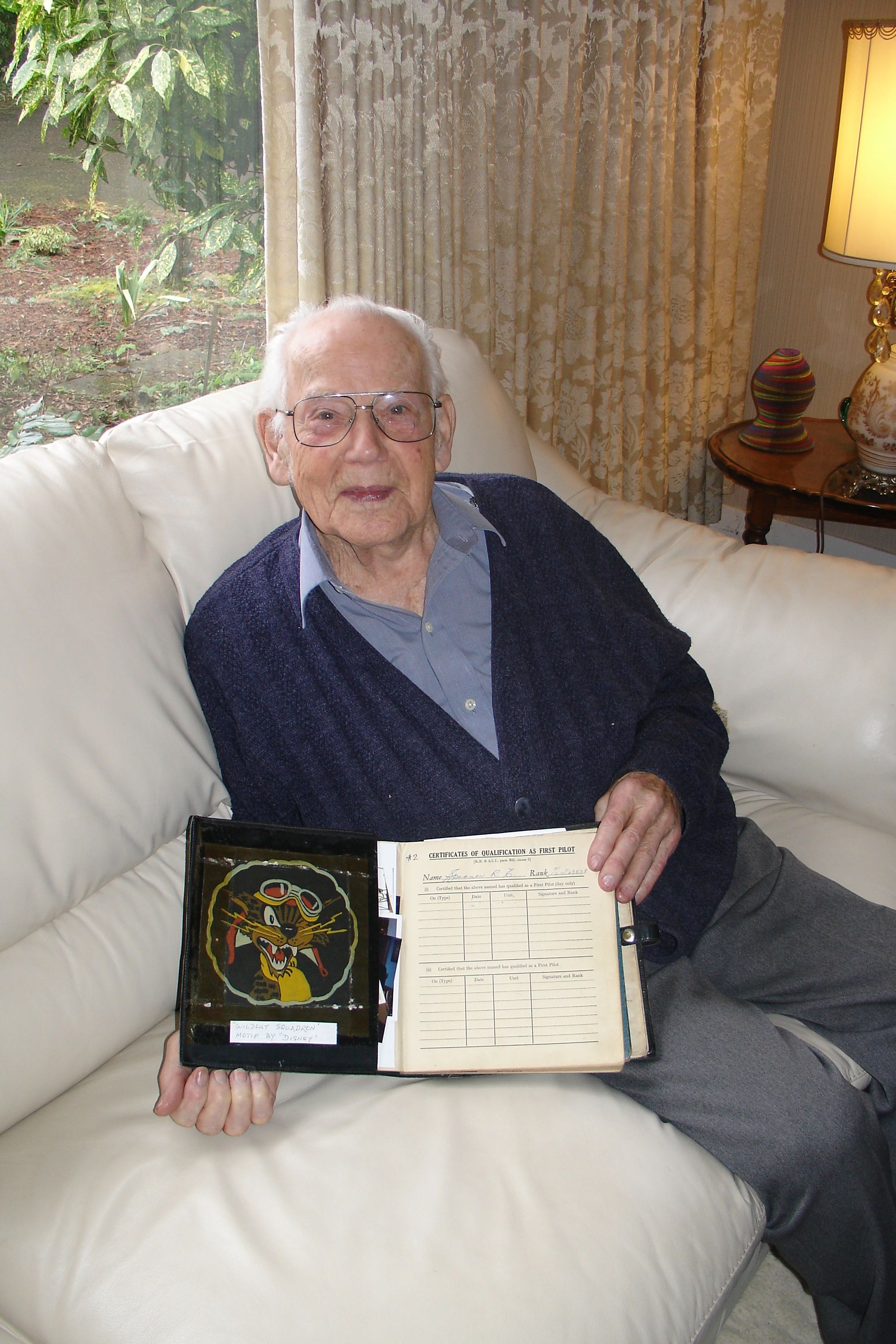
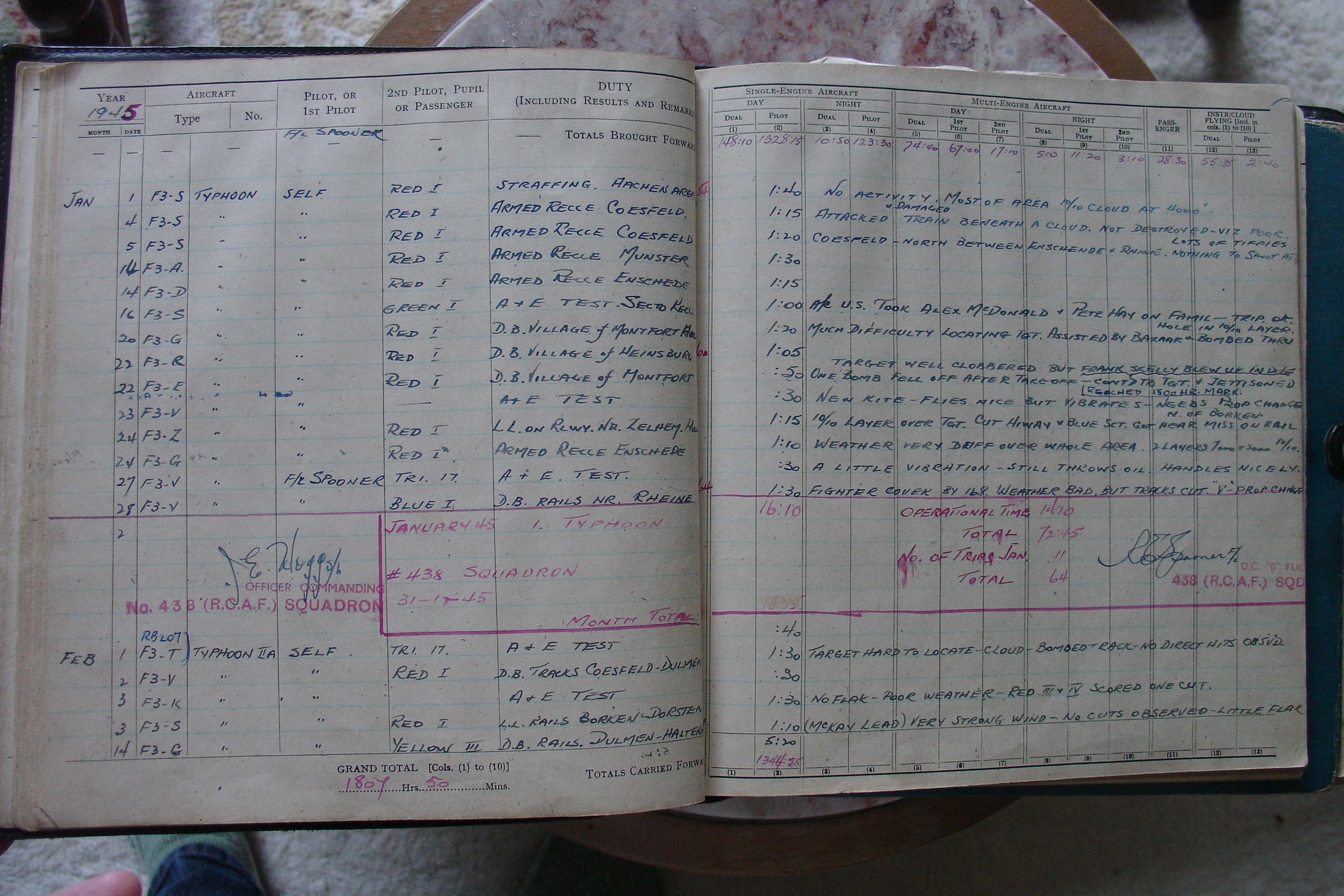
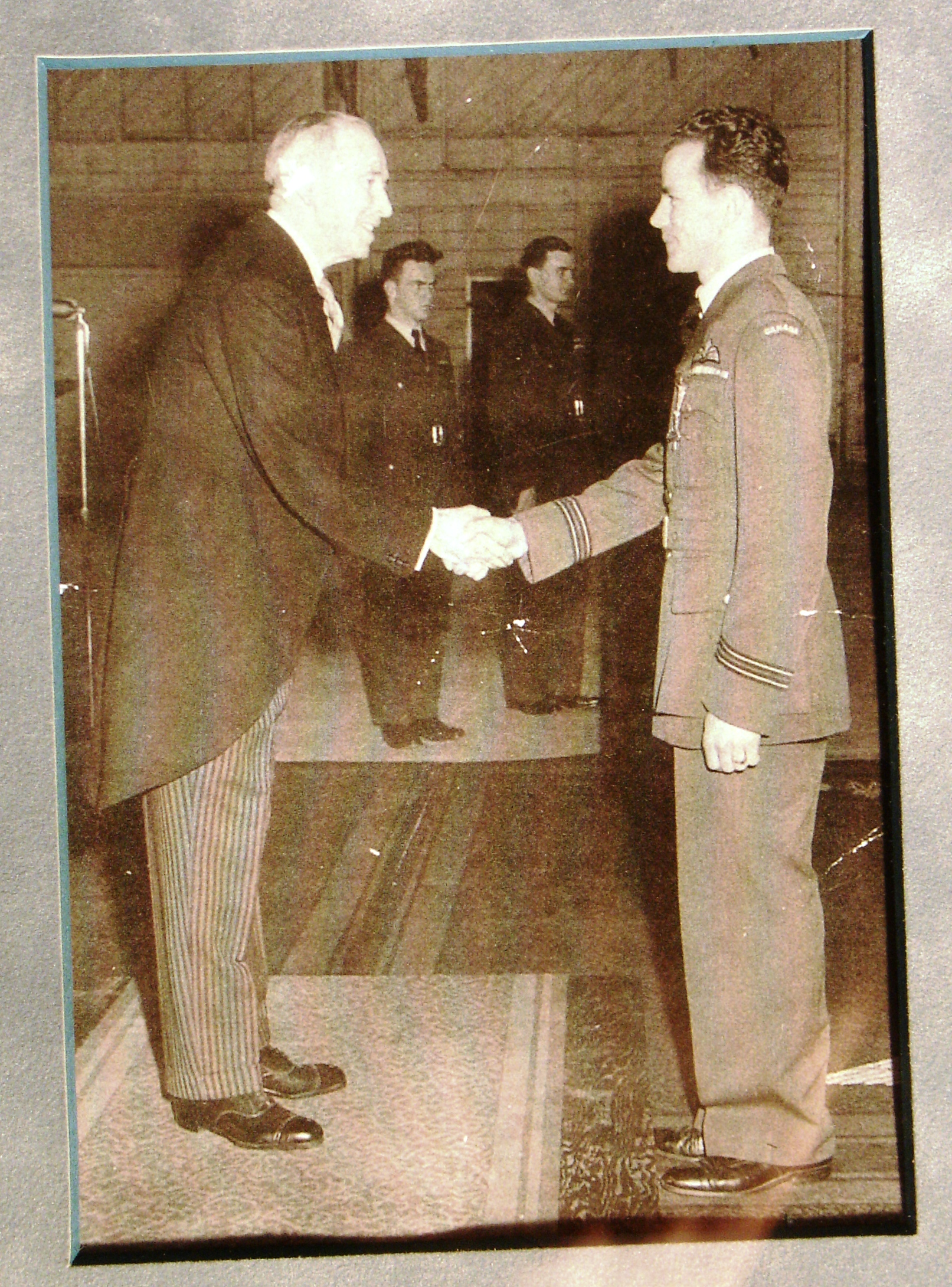
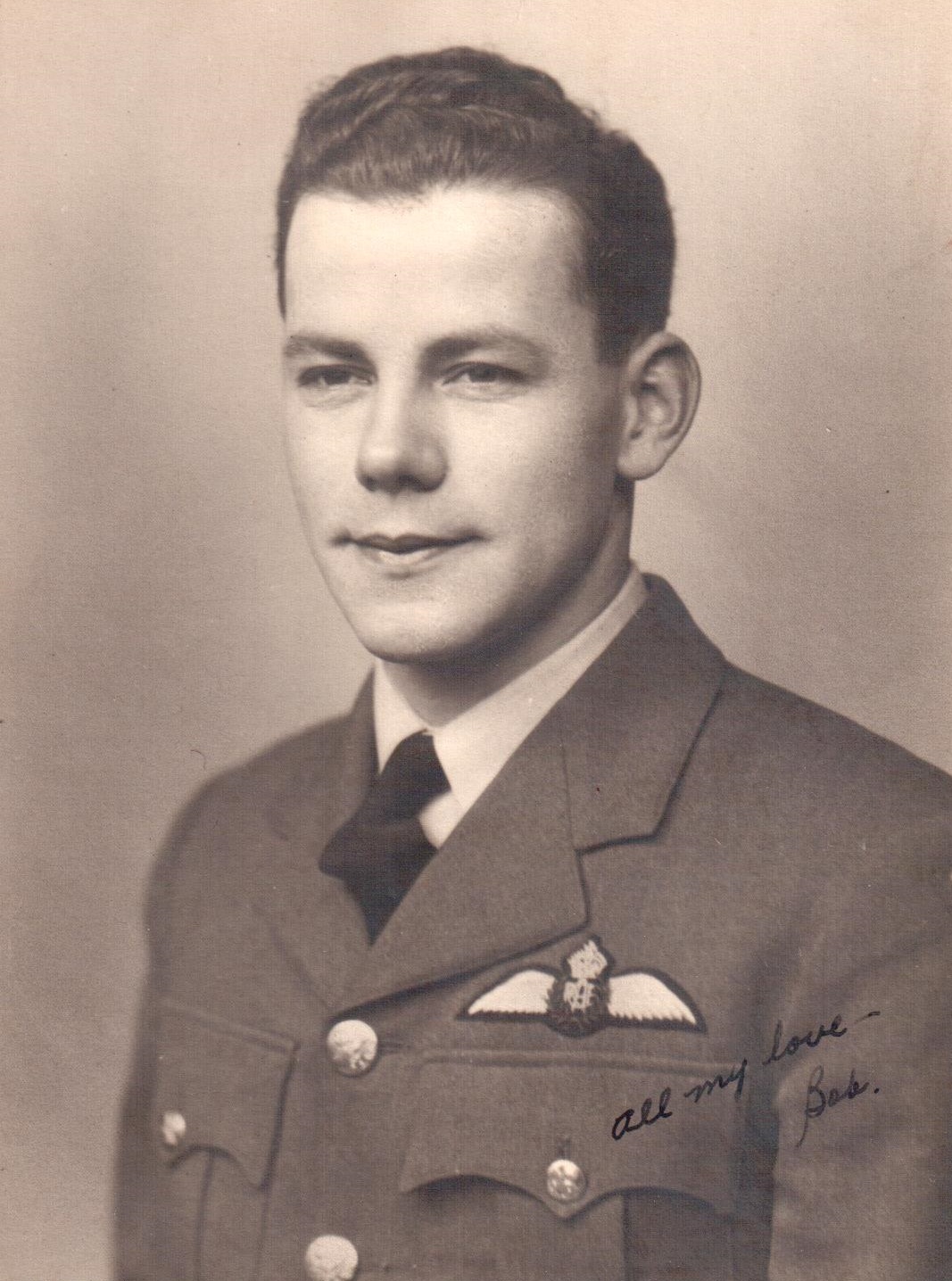
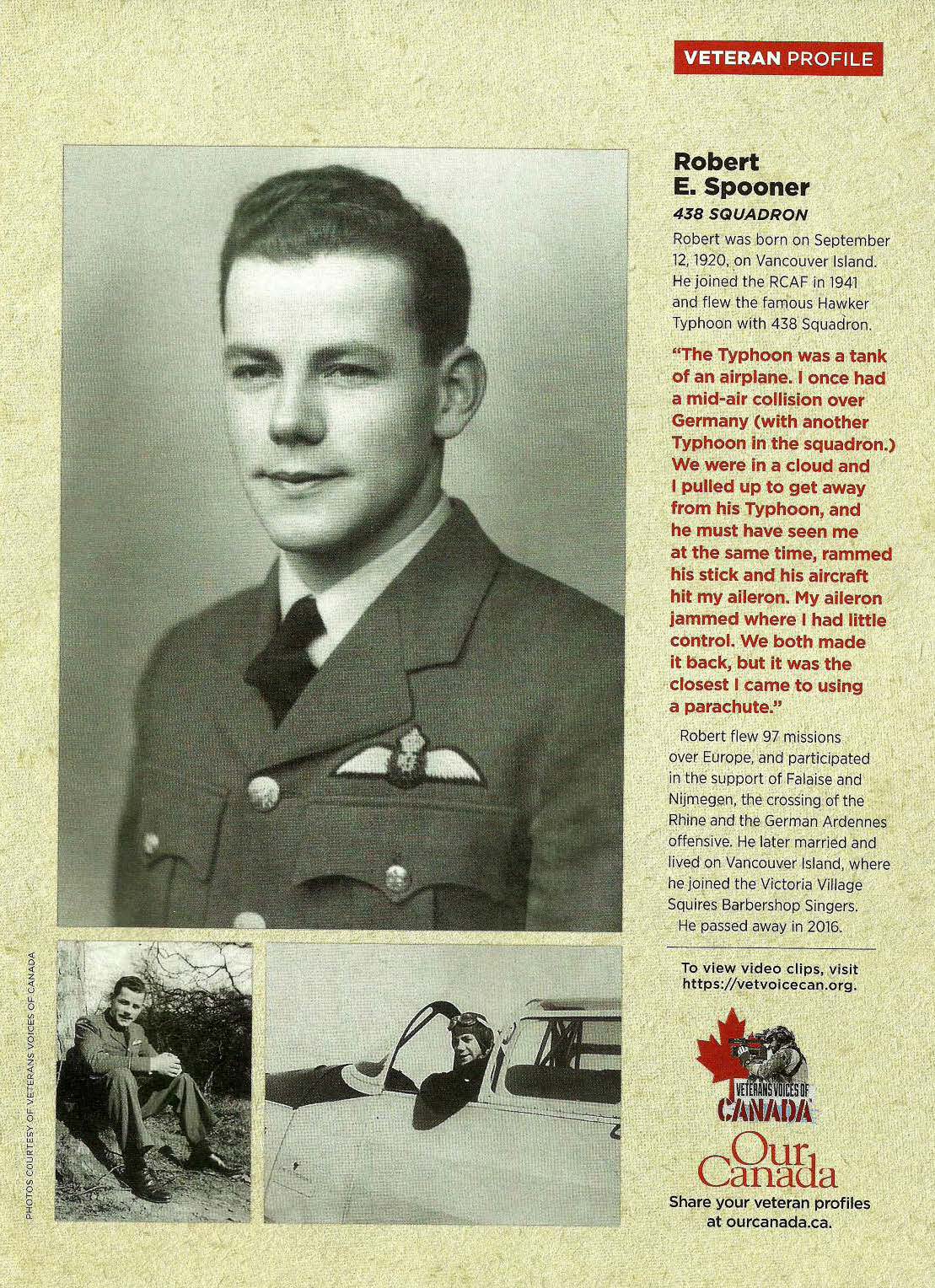
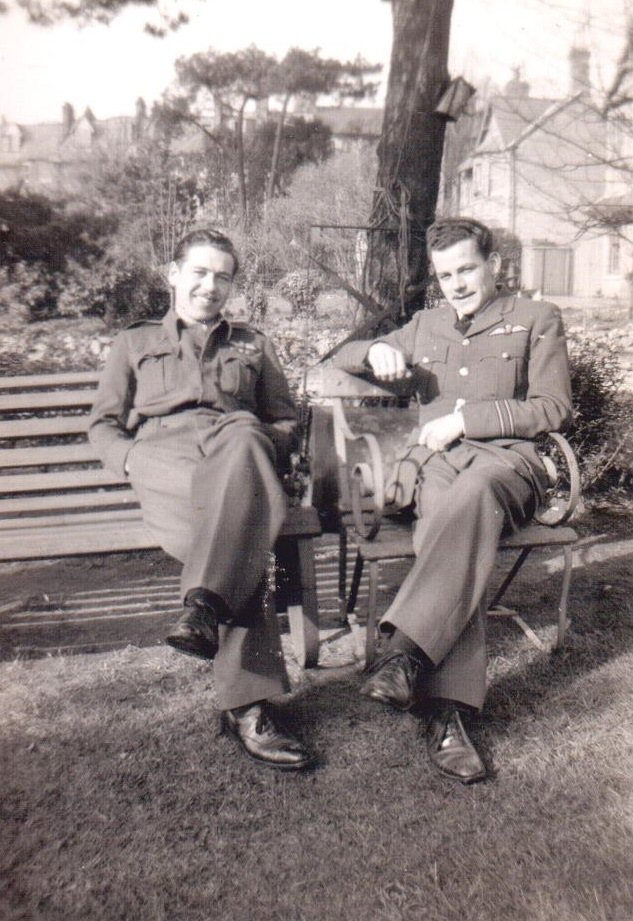
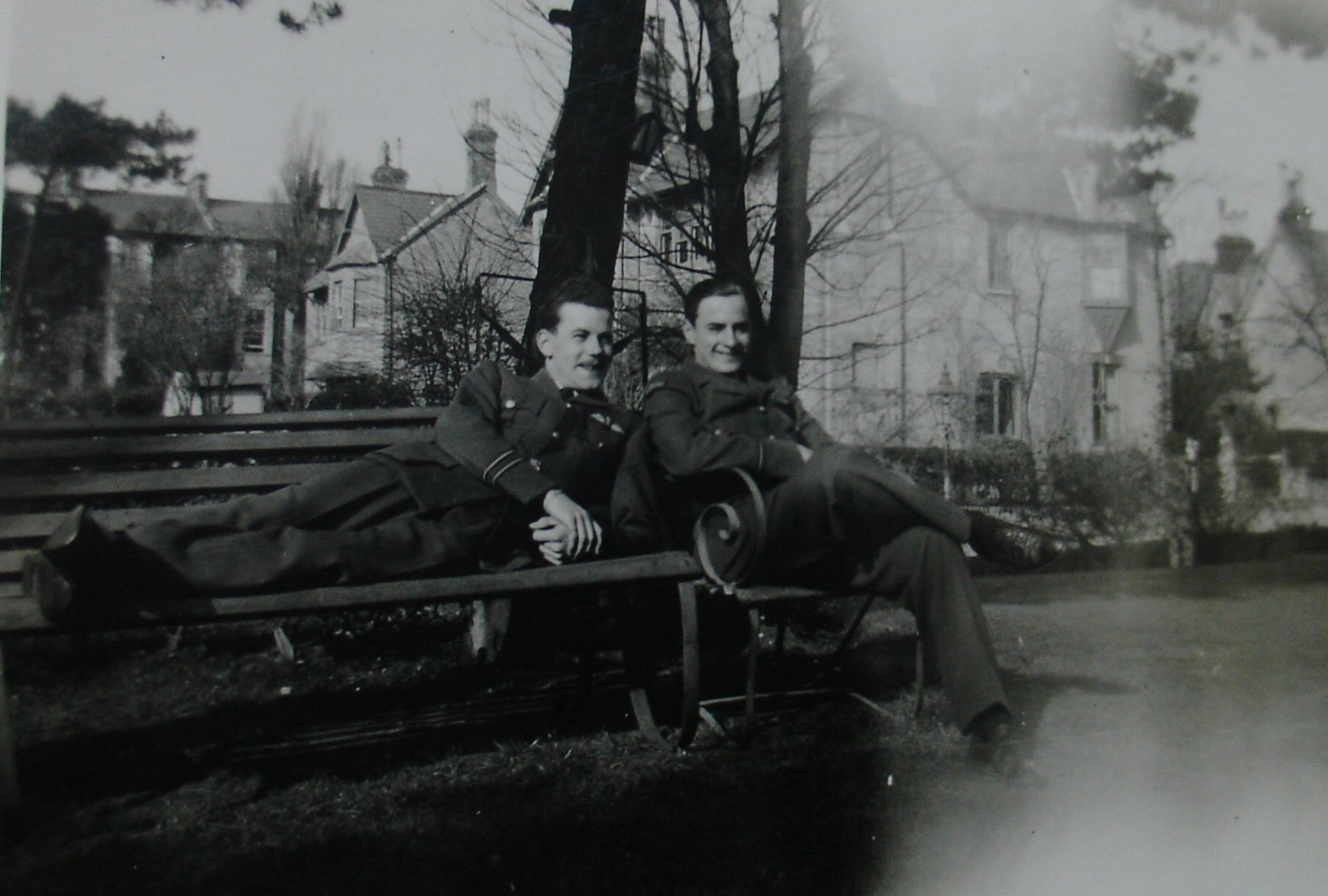
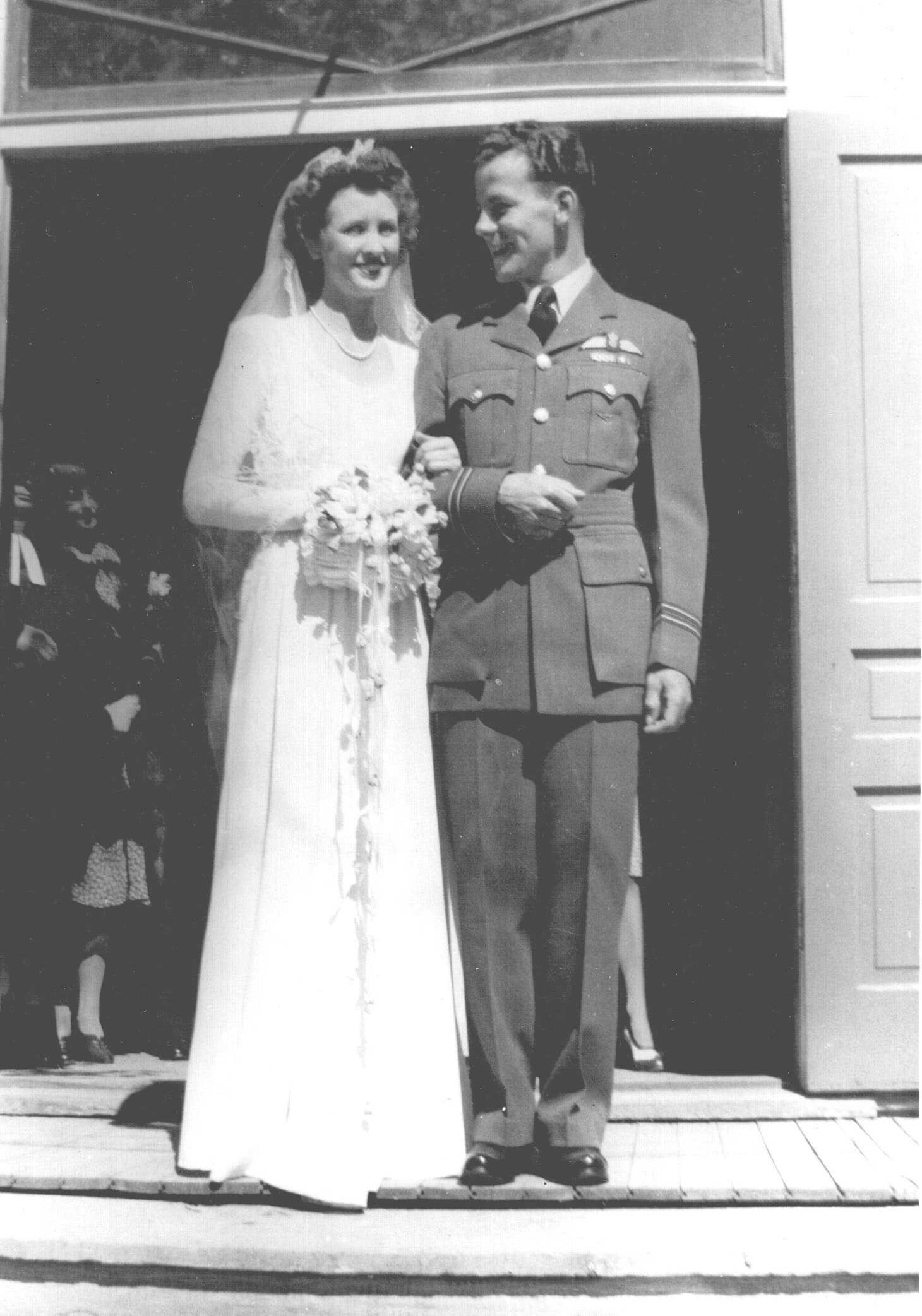
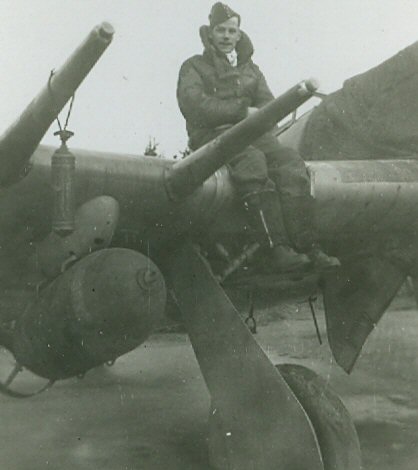
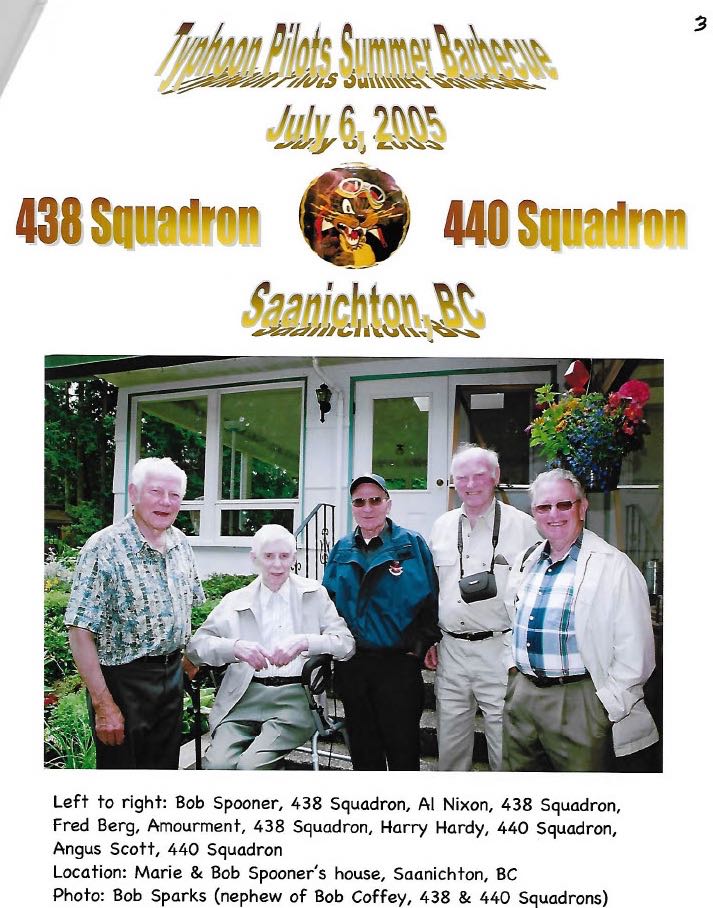
September 12, 1920 - July 6, 2016










Robert Spooner, known as Bob, grew up on the Saanich Peninsula, on Vancouver Island, during the 1920s on his parents' farm. His father was a WWI veteran.
Bob signed up in Vancouver and was sent to Manning Depot in Brandon, Manitoba. "I got a terrible cold. The building was a former stable. They kicked up a terrible amount of dust. I got a cold, plus dust. I survived that and then I went to Rivers, Manitoba for guard duty. Then Regina for book learning, then High River, as a student. From there I went to Dauphin, Manitoba for Service Flying Training School where we flew the Cessna Cranes. I was sent home on leave and then posted to Trenton on how to be an instructor. I wound back at High River as an instructor for a year and three months in 1942, so I would have been 22." (For more information about #5 EFTS High River www.bombercommandmuseum.ca)
"Before they let you fly a plane, you had to sign that you understand all the controls and everything else. And each month or week, you have to have your hours certified so that they are not fictitious. Every time we changed aircraft, you had to go through the same thing and sign it that you understood how to fly. Then I was sent to Claresholm for a refresher course and then back home to Saanichton for a week or two. It was a vacation, really, and then a train to Halifax to take me 'across the pond'. I crossed Canada several times on these old trains."
Bob continues his story. "I was on a ship on the way overseas, but we were only about 500 miles out and ran into submarines. With the depth charges being put over the sides, we sprung some of the plates on the old boat, so we had to go back to Newfoundland and eventually, we got another posting out of Halifax to New York City and boarded the Queen Mary in four days! It wasn't much luxury back then. They were just crowding the ship. Guys would be laying in the companion ways trying to get some sleep. One guy was sick on the tender going out to the boat! He never ate one meal the entire time until we got there. We landed at Greenock in Scotland and then we took a train to Bournemouth. The windows were blacked out. Those trains were fast."
Bob was held up for three months, as there were too many pilots and not enough positions once he arrived in England. "What bothered me is that I had three months waiting for a job and I couldn't really go anywhere...they might call me. I would have loved to have seen England and later, we did, in a very limited way. And it was the same as when I got my last job from Fighter Command Headquarters after I came back from the Continent. They said, 'Well, you can't come here.' I got a posting to where I learned to fly the Typhoon. 'You can't come here, we are closing the station.' I asked, 'What do I do?' They said, 'Well, go to Bournemouth.' Unless you have an order to do that, when you get there, they would not take you on strength. I had to use what money I had left to hire a hotel and I couldn't afford to go into restaurants, so I snuck into the Officers' Mess and it took me. Everyday, I would go up to see if there was anything from Headquarters and there wasn't and this went on for a month, I guess. Eventually, it came through that I could go on strength in Bournemouth, at the station. I claimed for that, but it took a year to get it. They were very thorough, but very slow! But after I was out of the Air Force for a whole year, I got a cheque for staying in these hotels. It's kind of funny."
Bob felt his time as an instructor helped him. "It is scary to think that some of these guys go over there and get into fighting with very little time, when you get down to it. They are qualified, but only just. I was very fortunate because I had all the training hours, not that I was flying the aircraft when the students were, but at least you knew the characteristics of the aircraft and what to do in the case of an emergency. And there were times where there were emergencies and that is another story I can tell you. I guess they looked at me and my log book, and the fact that I didn't drink liquor and they made me flight commander, very soon after I got onto the squadron; it bothered me because it was throwing a lot of responsibility on me before I really got into the act.... but you soon learn. The other thing is you have to have luck with you. I should have been dead several times, but luck got me through."
Bob discussed a few of his experiences. "The first trip, I thought, 'You are guilty now. There is no turning back.' But after that, you are given specific targets and you hope you don't hurt any innocents and I don't know whether I did or not. I had it happen that we were given a target and we were actually in the dive, well my squadron was, and we got a message to call it off that we were on the wrong side of the long line as we would have been bombing our own troops. So we had to pull out of the dive and there was a 1000-pound bomb under each wing and when you are in the dive, you are gaining speed really bad and there was a chance you could pull the wings off, by pulling back too fast. This is just one incident."
"I had a mid-air collision in Germany. That wasn't very good but I got home. The other plane wasn't hurt. We were in cloud. He was coming too close to me. I pulled up to be away from him. When he saw how close he was, he rammed his stick and his aircraft came up and his tail hit my aileron. His plane hit mine where the damage was not bad to his plane, but it locked my aileron and I was pulling up on a steep angle and I apparently went into a spin. I had never recovered from a spin in a Typhoon before, so I went through the motions. As it happened, it would not come out of the spin. I was ready to go through the procedure of getting out and parachuting. I had thought I was going down in a hurry. But I thought first: there is a manoeuvre where you use the throttle and it came out.... and I came out of the cloud at a very steep angle...I didn't have any stick control because it was jammed, but I could skate around the corners and I could fly home and I did. This is the closest time I came to using a parachute."
Bob flew the Typhoons for seven months. "I am glad I did tactical Air Force. You really recognize the Typhoon because of the big scoop on it. It had a 24-cylinder engine and it needed a lot of cooling. It is a one-person airplane. I was in an all-Canadian wing. We had three squadrons on that wing and we all had identification numbers. Our squadron was F3. My Typhoon was V: V as in Victor."
He continues, "The Typhoon is a real tank of a plane to fly. It is a good aircraft but very heavy. It was supposed to replace the Hurricane, built by Hawker, but it didn't fill the role...at high altitude, it couldn't perform; the German aircraft were better at high altitude and this one was very good at low level. Our job was to go low level. On August 1944, I was directed to #3 TFU at Aston Down, Gloucestershire (near Bristol) to graduate on to the Hawker Typhoon. This was a rugged single engine (2200 HP) used for dive-bombing, train busting, rail cutting and low level targets of opportunity. It was armed with four 20mm cannons and carried 2 -1000 lb. bombs, so it was a devastating package! After a full cockpit check and a green light from Control, I opened the throttle and felt the full thrust of the 2200HP engine, while holding hard left rudder to compensate for the tendency to swing starboard. It's a powerful aircraft! The Typhoon was hungry for really hungry for fuel. It would go about 150 miles out and another 150 back before it ran out of gas."
After the war, Bob worked for Butler Bros for over three decades. He was a member of the Victoria Village Squires Barbershop Singers, an avid gardener and fisherman, and was a member of the Victoria Golden Rods and Reels Club.
Bob and his beloved wife, Marie, travelled in the 1960s and 1970s to Portugal and France and once to England.
Bob and Marie were married for 67 years. They raised their three children on their acreage on the Central Saanich Peninsula. Their family continued to grow with the addition of four grandchildren, their spouses and four great-grandchildren.
LINKS: flyingforyourlife.com